A couple years ago I had a nice feature online about my use of bones in my art, jewelry and photography. That domain recently went dead so I'm duplicating it here since it answers a lot of questions I'm frequently asked.
Jana Miller lives in the humid south, where she turns dead things into beautiful pieces of art. Miller combines osteology with metal in a way that is fresh and plain old badass. Unlike the Fox program, she is the real Bones, hunting her personal property for remains to upcycle into something wearable. Her connection with nature is fascinating, so go ahead. Read on.
Tell me, when did you very first start making art?I honestly don't remember a time not making art. I imagine as soon as I could hold a crayon or paintbrush I was doing it. I even taught art at Summer camps to other children. I've dabbled in so many mediums over the years because I want to try out everything. Ceramics on and off the potters wheel, photography (since I was 7), upcycled mixed media from found items into 3-D pieces, watercolors, india ink, airbrushing, clothing and interior design, jewelry, silkscreen, and just about every possible type of paint, pen, pencil or crayon.
 How would you describe the kind of jewelry you make now? And how is it different from taxidermy?
How would you describe the kind of jewelry you make now? And how is it different from taxidermy?Well taxidermy is the lack of bones. Creating a stuffed version of the animal form from just the outer layer of fur, scales or feathers of that creature. My jewelry often includes those bones that a taxidermist might dispose of. I collect, clean, whiten and sanitize the bones and teeth I use in my jewelry. In self taught processes.
The end result varies. Snake vertebrae elegantly flowing on a vintage silver chain necklace. A number of different animal jaws with teeth mostly in tact paired with vintage charms create pendants. And my little natural history corked glass vials with bones, teeth, porcupine quills, shark teeth and other things from nature in them. What I make depends on what bones I have at the time.
 How did you discover a process for working with bones?
How did you discover a process for working with bones?I've been collecting bones, insects and other things from nature since I was seven. My processes for everything involved in collecting and cleaning these things were self taught from trial, error and common sense. As the years go on though I still learn new things and have met quite a few people to discuss these things with to learn from. With the birth of the internet there was a wealth of knowledge to be gained on a topic that is otherwise shunned.
Are there any kind of bones that are impossible to use in your art? Why or why not?For my art, no. It doesn't have any limits. My found items creations right now are rather small but they don't have to be. In a sense, my entire home is an art piece. The jewelry perhaps may be limited by the size/shape of some bones though.
Is there a big circle of artisans who work with bones, the same way you do?As the years go on things like this become more accepted by the mainstream, just as say tattoos have become VERY normal now compared to how they were perceived 10 years ago. As that happens the amount of artists grow in size as well. Some have been in the closet in a sense with no one to share their work with while others are just jumping on the bandwagon to make a buck.
I've certainly noticed a boom lately in things normally thought of as weird being given a chance to mingle with the norm. One example would be the new reality tv series "
Oddities", which is about a shop in NY that's been on my wish list to visit for a long time now,
Obscura Antiques.
There is also a growing fad the last few years of interior decorating with taxidermy, science specimens, natural history items, bones and other related items. Every one of my homes as always looked this way. Often jokingly referred to by friends as "Jana's Museum".
As a lifelong collector and creator of things not accepted by the norm I can tell who has passionately created a piece of art/jewelry and who has a cookie cutter system in hopes of making a quick sale, but not actually getting their hands dirty. Thankfully for the time being this is mostly still a small group of dedicated artists. I'd really rather not see my life's passion become the next fad at Hot Topic.
What other materials do you enjoy working with?Vintage and found items are favorites for sure. Lately the focus of my mixed media art are items found on my property. Things of nature like moss, fungi, bark, insects. leaves, vines, thorns, seed pods and etc. I love working art pieces and ones that move. So I often use shadow boxes and different types of containers that open and close.
 I read on your blog that your love for your work stems from equal admiration of nature and science. What books and blogs can you recommend for people with the same interests?
I read on your blog that your love for your work stems from equal admiration of nature and science. What books and blogs can you recommend for people with the same interests?Well actually, I made my BoneLust blog because there isn't much else out there like it. The topic of death is still heavily shunning in our society, and my work is often closely tied in with that.
I regularly get quite a few questions from people who are interested in starting to collect bones so I figured I'd put my experience out there for everyone to read. I plan on posting more technical HowTo blogs up in the future to answer more specific questions about the processes I use.
There are a lot of related blog/photo links at my blog in the realm of bone collecting/preparing, taxidermy, anatomy, science, art, fashion, movies and music.
A group of Flickr friends of mine that regularly discuss the photos of our finds, collections and art created "
The Bone Collectors" message board this past Spring but it is honestly pretty inactive now.
Hoping it picks up again as more people join.
I am on the email list for one blog I can highly suggest -
Morbid AnatomyAs for books, I suggest checking out
The Morbid Anatomy Library and Cabinet in person if possible.
Or online,
The Morbid Anatomy Bookstore on Amazon.com.
What has been your favorite find so far?On Christmas day last year I went out for a walk with my two dogs in the woods with the intention of finding some bones. This is what I found:

The remains of a huge male wild boar after a hunter took what he wanted. The skull was fully intact and after many months of processing I now have the most beautiful perfect skull in my collection. I don't have a final photo but here it is part way through the cleaning process:
 What albums and bands are you into right now?
What albums and bands are you into right now?Music is right up there with art/photography and bone collecting as far as things go that have always been a part of my life. I have an extremely wide range of music I like and go to shows as often as possible. I also specialize in live music photography.
(Yea, MySpace is dead but that's where I posted
my show photoblogs for years.)
Lately I've been listening to the last
Zoroaster release "Matador" as well as
Karp,
Red Sparowes,
Tim Barry,
Drag the River,
Dark Castle,
Black Cobra,
Torche,
Chris Wollard & the Ship Thieves, and the
Conor Oberst solo albums and side projects.
----
Related Updates & Interview Followup:
Bone Group - The Bonelust CollectiveI wanted to add that since I had this interview I started my own intimate bone group on Facebook that has a focus on animal/human bone processing and collecting, taxidermy and wunderkammer collections. It is for hardcore enthusiasts of these topics. To the degree that I'd consider them more to be lifestyles than hobbies. Not for the squeamish as there are regularly photos of dead animals posted to it. As many of the collector process their own roadkill or hunter dumped remains. Nor is it a group for people that just aimlessly "like" stuff on Facebook and join groups only to sit in the background and watch others. I keep the group active, intimate and organized with a focus on learning. If you think this sounds like something you're up for add me on
my Facebook profile and email with your interest to join. I currently have nearly 60 members with many outside the United States.
The Bone ReaderAs for music I now work at a music site,
The Bone Reader, as Assistant to Editor, Den Mother and Staff Photographer. Yes, I found the name quite fitting too.
























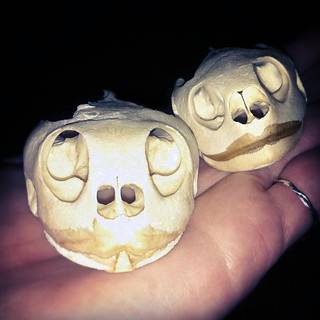






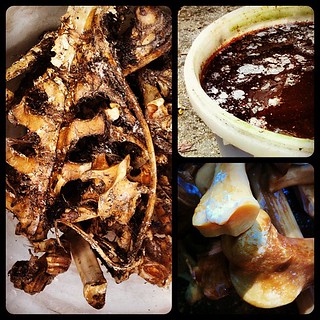
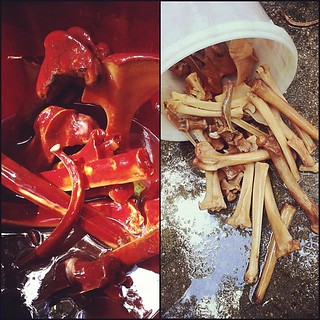
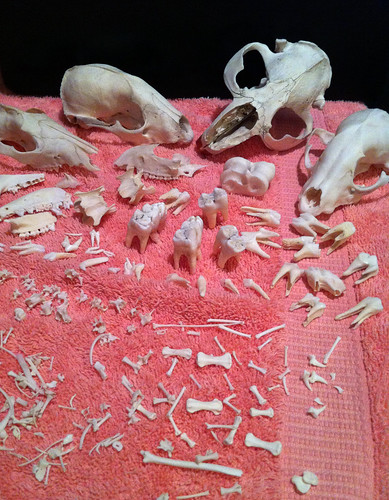



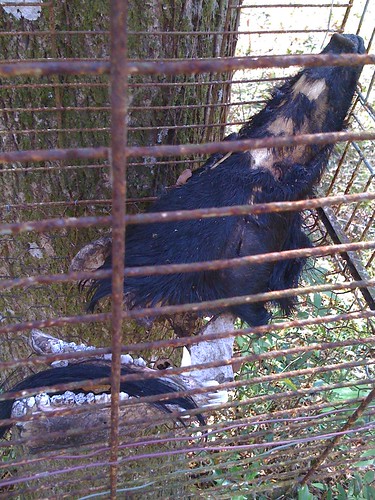
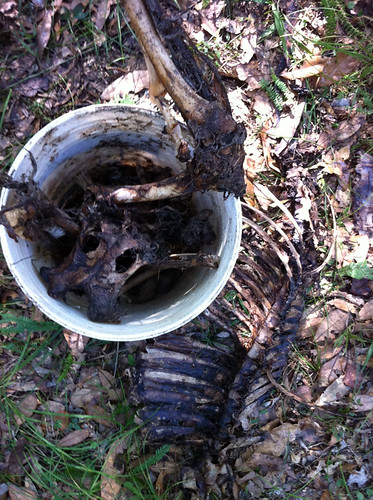

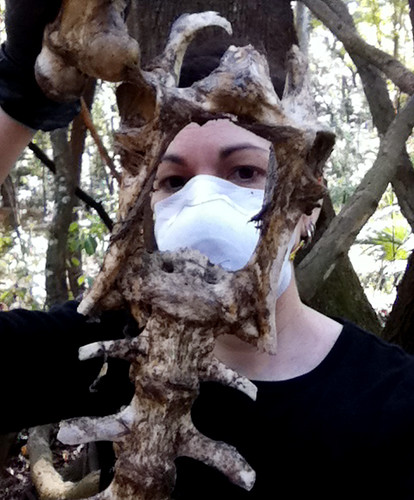










I am! This is just a small peek into my bone supplies. 99% of the animal bones, teeth & claws I use in my art I find and process myself. They are natural death, road kill and hunter dumped remains I've collected & fully processed myself. Nothing is ever killed for my art. On rare occasions I locate ethical sources for anything I can't find locally. Like the quills & deer antler I use, which are naturally shed. Sorry, but I do not sell my bone supplies or tell anyone the sources for any of my supplies in general.